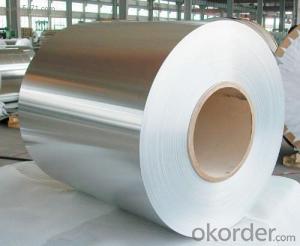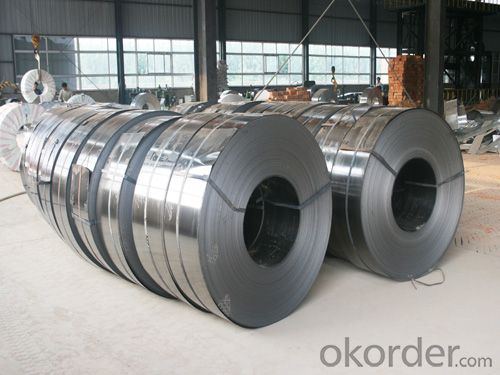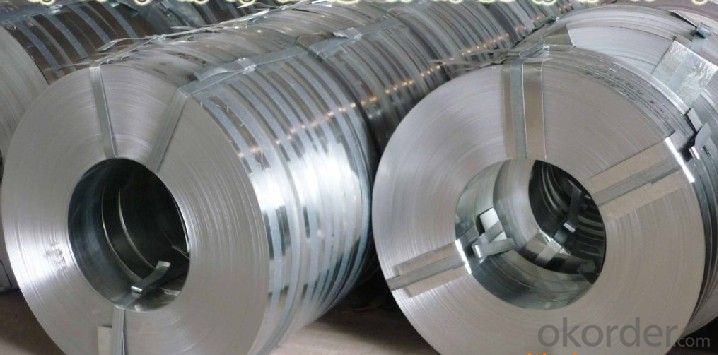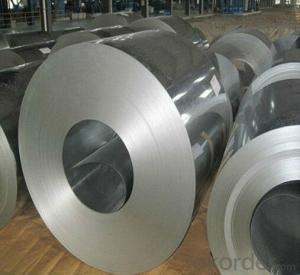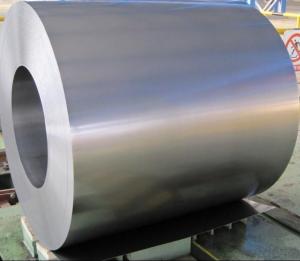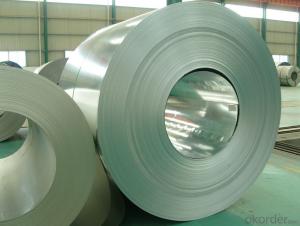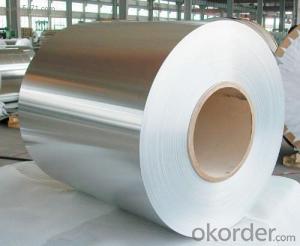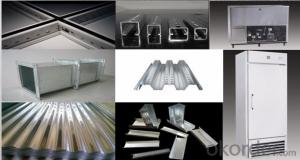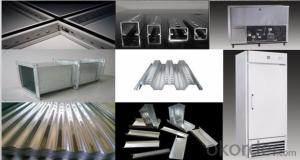Hot-dip Zinc Coating Steel Building Roof Walls -Smooth and Flat Surface
- Loading Port:
- China main port
- Payment Terms:
- TT OR LC
- Min Order Qty:
- 50 m.t.
- Supply Capability:
- 10000 m.t./month
OKorder Service Pledge
OKorder Financial Service
You Might Also Like
Hot-dip Zinc Coating Steel Building Roof Walls -Smooth and Flat Surface
1.Structure of Hot-Dip Galvanized Steel Sheet Description:
Hot-dip galvanized steel coils are available with a pure zinc coating through the hot-dip galvanizing process. It offers the economy, strength and formability of steel combined with the corrosion resistance of zinc. It is especially useful for countless outdoor and industrial applications. Production of cold formed corrugated sheets and profiles for roofing, cladding, decking, tiles, sandwich walls, rainwater protective systems, air conditioning duct as well as electrical appliances and engineering.
2.Main Features of the Hot-Dip Galvanized Steel Sheet:
• Smooth and flat surface
• Workability, durability
• High strength
• Good formability
• Good visual effect
3.Hot-Dip Galvanized Steel Sheet Images
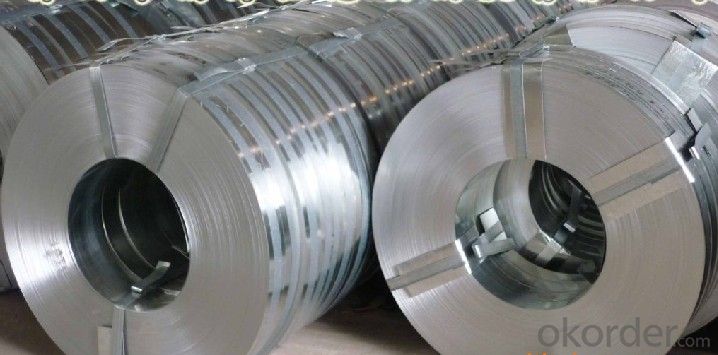
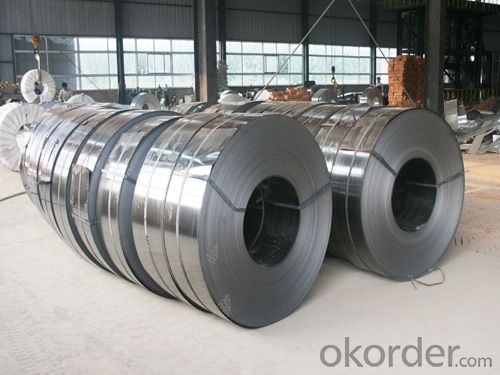
4.Hot-Dip Galvanized Steel Sheet Specification
Standard: ASTM, JIS,EN
Grade: CS, DX51D+Z,SGCC, SS 230~550,S220GD+Z~S550GD+Z, SGC340~SGC570
Thickness: 0.18mm~5mm
Width: max 2000mm
Coil weight:3-12 MT
Coil ID:508/610mm
Surface structure: zero spangle, regular spangle or minimum spangle
Surface treatment: Chromate treatment, Oiled/dry, skinpassed/non-skinpassed
Packing: Standard seaworthy export package
5.FAQ of Hot-Dip Galvanized Steel Sheet
1.How to guarantee the quality of the products?
We have established the international advanced quality management system,every link from raw material to final product we have strict quality test;We resolutely put an end to unqualified products flowing into the market.
2. How long can we receive the product after purchase?
Usually within thirty working days after receiving buyer’s advance payment or LC. We will arrange the factory manufacturing as soon as possible. The cargo readiness usually takes 15-30 days, but the shipment will depend on the vessel situation.
- Q: What are the different types of steel coil packaging techniques?
- There are several different types of steel coil packaging techniques that are commonly used in the industry. These packaging techniques are designed to protect the steel coils during storage, transportation, and handling, ensuring that they arrive at their destination in optimal condition. One type of steel coil packaging technique is known as "eye-to-the-sky" packaging. In this method, the steel coils are stacked vertically with the eye of the coil facing upwards. They are then secured using steel strapping or banding. This technique is often used for smaller coils and provides good protection against damage caused by handling and transportation. Another common packaging technique is known as "eye-to-the-wall" packaging. In this method, the steel coils are stacked horizontally with the eye of the coil facing the wall. They are then secured using steel strapping or banding. This technique is often used for larger coils and provides better stability during transportation. A third packaging technique is known as "shrink-wrapping." In this method, the steel coils are wrapped tightly in a plastic shrink-wrap material. This provides protection against moisture, dust, and other contaminants. Shrink-wrapping is often used when the steel coils need to be stored or transported outdoors or in harsh environments. Additionally, some steel coil packaging techniques involve the use of wooden pallets or skids. The coils are placed on these pallets or skids, which provide a stable base and allow for easy handling with forklifts or other equipment. The coils can then be secured to the pallets or skids using steel strapping or banding. Overall, the choice of steel coil packaging technique depends on factors such as coil size, transportation requirements, and environmental conditions. By selecting the appropriate packaging technique, steel coils can be effectively protected and delivered to their destination without damage or deterioration.
- Q: Can cold rolled galvanized steel coils be acid washed after oxidation?
- Hot rolling is made of slabs (mainly continuous billets) as raw materials. After heating, strips are made from roughing mills and finishing mills. From the last finishing mill stand out of the hot strip laminar cooling through to the set temperature, the coiling machine rolled strip steel roll cooled, according to the different needs of users with different finishing line (flat, straightening, transverse or longitudinal, inspection, weighing, packing and marking etc.) processing and become steel, flat steel product volume and slitting.
- Q: How are steel coils used in the production of metal fencing?
- Steel coils are used in the production of metal fencing as they serve as the raw material for creating the wire mesh that forms the structure of the fence. The steel coils are uncoiled and then passed through a series of machines that shape and weld them into the desired fence panels or rolls. These panels are then further processed and treated to enhance their durability and resistance to corrosion, ultimately resulting in high-quality metal fencing products.
- Q: i know stainless steel swords are decoration, what metal is ok for a sword that is usable
- Why the interest in a 'usable' sword ~~ are you really going to use it?
- Q: Why?Which one should i get? I am just starting to learn Guitar. Which one would be better for me? What is the difference? I already got the acoustic nylon but i might return it... if the steel is better.
- I okorder /
- Q: could someone please explain to me in detail the functions of stainless steel wall ties?
- they tie the walls to the ceiling to keep it from being blow en off in a storm stainless steel wont rust and become weak
- Q: How are steel coils coated for color and aesthetics?
- Color and aesthetics can be added to steel coils through a process known as coil coating. This process involves applying a layer of paint or coating material to the surface of the steel coil in order to enhance its appearance and protect it against corrosion. To start the coil coating process, the steel surface is thoroughly cleaned and pre-treated. This step ensures that the surface is free from any contaminants and provides a suitable base for the coating to adhere to. The pre-treatment process may include cleaning, degreasing, and chemical treatment to improve the adhesion and durability of the coating. Once the surface is prepared, the coil is fed through a continuous coating line. In this line, the coating material, usually a liquid paint, is applied to both sides of the steel coil using various methods such as roll coating, spray coating, or electrostatic coating. The coating material is carefully chosen to achieve the desired color, texture, and durability. After the coating is applied, the coil undergoes a curing process. During this process, the coil is heated to allow the coating material to dry and bond to the steel surface. This ensures a strong and long-lasting finish that can withstand exposure to different environmental conditions. Moreover, coil coating technology allows for additional treatments to enhance the aesthetics of the steel coil. For instance, the coil can undergo embossing, where a pattern is pressed onto the surface, creating a textured or three-dimensional appearance. Additionally, other decorative techniques like printing, laminating, or adding metallic effects can be used to achieve specific aesthetic effects. In conclusion, the coil coating process not only adds color and aesthetics to steel coils but also provides a protective layer that increases their lifespan and resistance to corrosion. This makes them suitable for a wide range of applications, including roofing, automotive parts, appliances, and construction materials.
- Q: i know theres steel in it but what else?
- Corosion Resistant steel..... It does corrode... just at a slower rate then normal steel.
- Q: Is cold steel actually steel? Does it hurt? Why is it used in training? First one to goodly answer those questions gets 10 points.
- Cold steel was an expression originally used to signify a sword. From feeling the cold of the blade as it entered the body.
- Q: Can steel coils be coated with abrasion-resistant materials?
- Yes, steel coils can be coated with abrasion-resistant materials. These materials are applied to the surface of the steel coils to provide added protection against wear and tear caused by friction and other abrasive forces. This coating helps prolong the lifespan of the steel coils and maintain their performance in various applications.
Send your message to us
Hot-dip Zinc Coating Steel Building Roof Walls -Smooth and Flat Surface
- Loading Port:
- China main port
- Payment Terms:
- TT OR LC
- Min Order Qty:
- 50 m.t.
- Supply Capability:
- 10000 m.t./month
OKorder Service Pledge
OKorder Financial Service
Similar products
Hot products
Hot Searches
Related keywords
